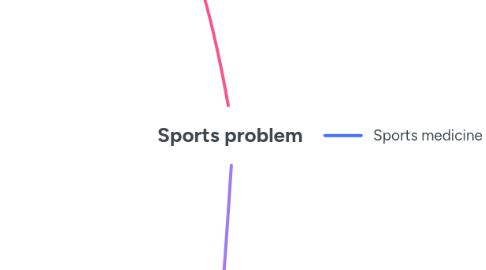
1. Sports science
1.1. Performance analysis
1.1.1. In-game strategy and decision making
1.1.1.1. How to identify the important attributes in a game that may lead to favourable opportunities?
1.1.1.2. How to identify the optimal course to steer a sailing boat, accounting for the wind direction and speed weather condition?
1.1.1.3. How to identify the optimal pacing strategy for a race?
1.1.1.4. How to discover patterns of play in a sports? E.g.,netball
1.1.1.5. How to formulate and advise strategies based on the opponents playing style? E.g., track cycling
1.1.2. Performance/ game outcome prediction
1.1.2.1. How to predict the winning times for racing events?
1.1.2.2. How to select players to form a team with higher winning probability?
1.1.2.3. How to identify the winning strategy of a team sport?
1.1.2.4. What is the expected change in the outcome with the adjustment of playing strategy (simulation)?
1.1.2.5. Can we predict the athlete's cognitive behaviour and decision making?
1.1.3. Skill acquisition/ coaching
1.1.3.1. How to identify the task constraints that may influence the training outcome?
1.1.3.2. How to benchmark an athlete's performance based on their physical performance?
1.1.3.3. How to compare skill techniques and predict the performance outcome?
1.1.3.4. How to profile the successful athletes' skills and techniques?
1.2. Computer vision
1.2.1. How to identify and tag movements and events in a computer vision?
1.2.2. How to track and classify ball movement trajectories that may lead to a favourable outcome?
1.2.3. How to identify opponents playing style and tactical approach through computer vision?
1.2.4. How to map out shot selection and passing patterns?
2. Talent management
2.1. Performance benchmark
2.1.1. How to provide benchmarks for talent development?
2.1.2. How to track athletes' seasonal progression?
2.1.3. How to determine the value of a professional athlete?
2.2. Talent identification
2.2.1. How to predict an athlete's performance trajectory?
2.2.2. How to provide benchmarks for talent development?
2.2.3. How to identify talents based on physical attributes and other characteristics?
2.2.4. How to classify playing position based on players' expressed skillset?
2.3. Talent transition
2.3.1. How to identify athletes who may be successful when transferred (recycled) to another sports?
3. Sports medicine
3.1. Wellness and training load monitoring
3.1.1. Athlete's readiness
3.1.1.1. How to identify athlete's level of stress and well-being from a training diary or journal?
3.1.1.2. How to predict the expected level of performance output based on athlete's biometrics data?
3.1.1.3. How to develop predictive modelling for sports injuries?
3.1.2. Mental health and psychology
3.1.2.1. How to assess the well-beings of the athlete based on biometrics data (physical, physiological and behavioural characteristics)?
3.1.2.2. How to identify neurophysiology, cognitive function and psychopathology risk in athlete by measuring brain activity?
3.1.2.3. How to track and monitor athletes' well-being and predict who may be more prone to burn out?
3.1.2.4. How to identify the level of stress in a journal by text-mining?
3.1.2.5. How to identify the influence of genetics, social support, sense of identity and other factors on an athlete's performance?
3.1.2.6. How to identify factors that may help athletes to get into the zone/ flow?
3.2. Injury and rehabilitation
3.2.1. Injury risk mitigation and modelling
3.2.1.1. What are the common movement patterns leading to an injury?
3.2.1.2. How to identify the optimal training load of an athlete, in order to reduce injury risk and/ improve performance?
3.2.1.3. How to predict the likelihood of injury and subsequent injury?
3.2.1.4. How to identify which screening tests are associated with higher injury risk?
3.2.1.5. How to identify the interactions between contextual variables (e.g., athlete characteristics, training and competition data?
3.2.2. Rehabilitation
3.2.2.1. How to identify strategies to minimise time to return-to-play and maximise performance?
3.2.2.2. How to predict when an athlete is ready for return to play?
3.3. Female athletes
3.3.1. How does the menstrual cycle influences sports performance, sleep, recovery, strength and injury?
3.3.2. What are the barriers and facilitators to returning to sport post pregnancy and their impacts on performance?
3.4. Precision health
3.4.1. How to prescribe individualised diet and training programs based genetics and genomics profiles?
3.4.2. How to identify athletes more prone to stress, injury based on genetics and genomics profiles?
